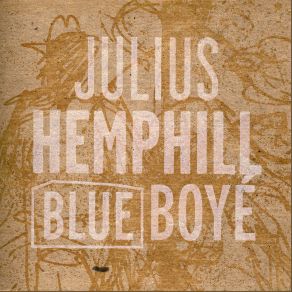Blue Boyé, Vol. 2 / Blue Boye, Vol. 2
Download links and information about Blue Boyé, Vol. 2 / Blue Boye, Vol. 2 by Julius Hemphill. This album was released in 1977 and it belongs to Jazz, Avant Garde Jazz genres. It contains 4 tracks with total duration of 40:02 minutes.

|
|
|---|---|
| Artist: | Julius Hemphill |
| Release date: | 1977 |
| Genre: | Jazz, Avant Garde Jazz |
| Tracks: | 4 |
| Duration: | 40:02 |
| Buy it NOW at: | |
| Buy on iTunes $9.99 | |
Tracks
[Edit]| No. | Title | Length |
|---|---|---|
| 1. | Kansas City Line | 9:24 |
| 2. | C.M.E. | 12:23 |
| 3. | Dirty Row | 8:28 |
| 4. | Homeboy Tootin' at the Dog/Star | 9:47 |
Details
[Edit]Recorded in 1977 in a cold basement studio in New York, the late Julius Hemphill self-released Blue Boyé on his own Mbari label. Given that there was almost no independent distribution that actually paid people in those days, Hemphill's record, a beautifully packaged double album, sank without a trace. It seems that after his death, the original tapes of the album also disappeared. Enter Tim Berne, saxophonist, composer, bandleader, independent label boss, and art terrorist — as well as a former student of Hemphill's. Out of devotion and an impeccable sense of knowing what to offer people, Berne has had the CD remastered from well-preserved vinyl copies, and listeners thus have this double CD. All eight tracks are meditations on various formal musical structures, and, as Hemphill claims in his manifesto-like liner notes, autobiographical. There is the chamber serialism of "Countryside," an impressionistic, textured travel through the inner workings of the flute and soprano saxophone as well as a gorgeous multi-tracked alto in the lower register. On "Hotend," Hemphill's multi-tracked saxophones are more expressionistic, using one part of the blues, one part personal experience, and one part the musical instinct of being a great balladeer — in Archie Shepp's definition of the word. The playfulness of "OK Rubberband," with its funky backdrop and handclap percussion, is reminiscent of Roland Kirk in its humor, warmth, and screaming blues lines.
On disc two, "Kansas City Line" is the most purely Hemphill piece in his entire oeuvre. On this piece, the solo alto — playing itself through the blues and ancient swing lines — reveals the true guiding light behind the World Saxophone Quartet. Here is the true funk and soul in the bottom of the jazz art. In "C.M.E.," Hemphill reveals the fine twining of soul, blues, and gospel and floats them along a time line from the end of the 19th to the end of the 20th century. Kirk again makes a spiritual appearance in the album's closer, "Homeboy Tootin' at the Dogstar." Here, overdubbed flutes and Hemphill's singing through them go for the deep groove right from the jump. They bend corners, lift themselves out of the gospel tradition, and head straight for the unknown — while keeping the vernacular backbone a part of the story that everyone can hear. Blue Boyé is a singular album, born of equal parts inspiration, determination, and artistry. It should be heard by virtually anyone interested in Hemphill to be sure, but not only. Blue Boyé is an album that reveals as much about the history of American black music as Sly & the Family Stone's There's a Riot Goin' On, Anthony Braxton's For Alto, Aretha Franklin's Aretha, Duke Ellington's Drum Is a Woman, or Michael Jackson's Thriller.